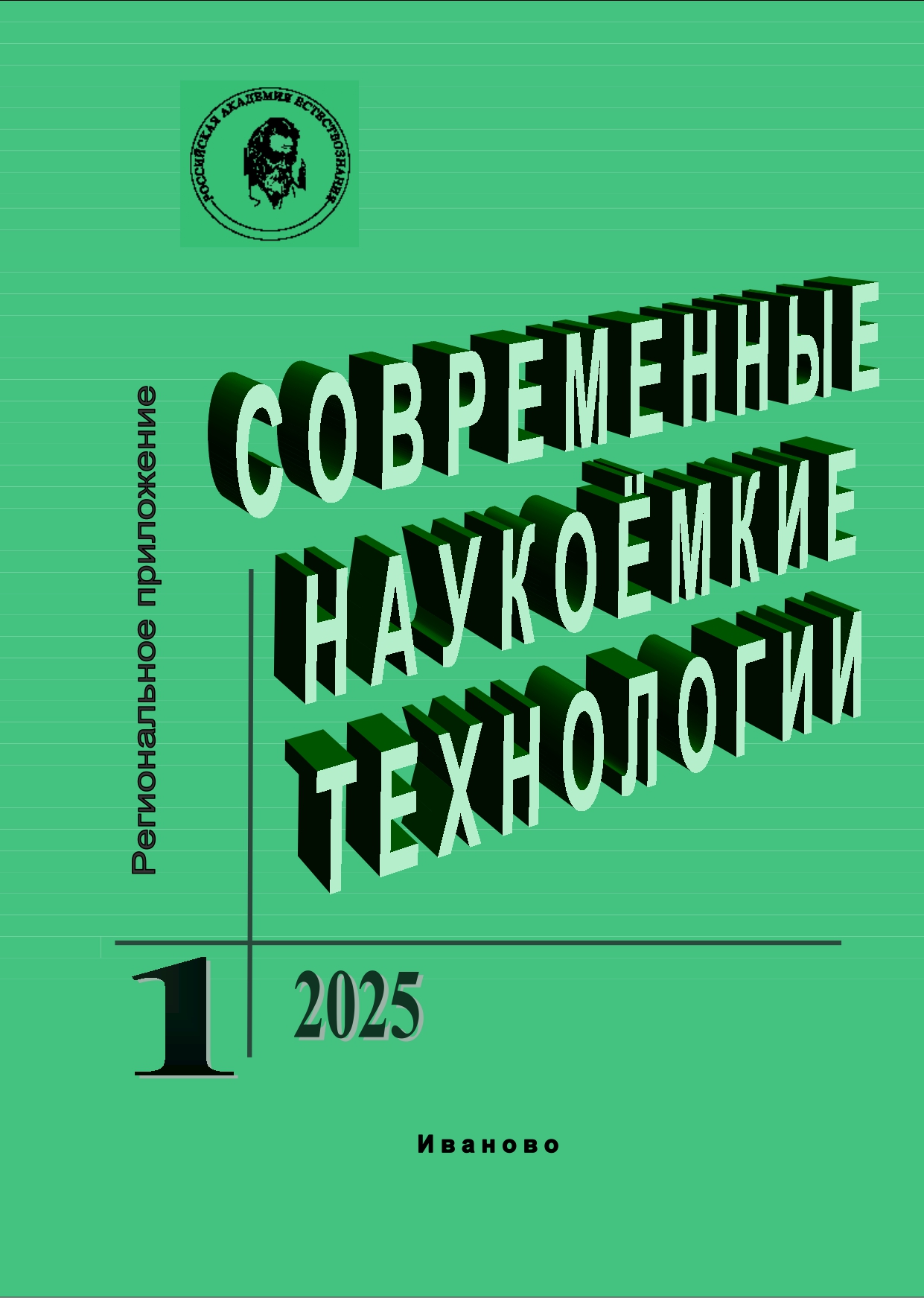КОНВЕРСИОННЫЙ МУЛЬТИПЛИКАТОР ДЕНЕЖНОЙ МАССЫ КАК НОВЫЙ ИНСТРУМЕНТ В РАЗВИТИИ КОНЦЕПЦИИ БАНКОВСКОГО МУЛЬТИПЛИКАТОРА
Аннотация
связи со снижением роли денежной массы как целевого показателя центрального банка отмечено падение интенсивности разработок в области построения денежных мультипликаторов. Обоснована актуальность создания инструментов оценки влияния новых видов денег на денежную массу (конверсионных мультипликаторов). Показан поэтапный процесс возникновения и развертывания концепции банковского мультипликатора с момента ее возникновения до текущего этапа, связанного с созданием электронной и цифровой валюты. Уточнена роль отдельный авторов в процессе разработки вопросов экспансии банковских депозитов. Рассмотрены имеющиеся и предложены новые варианты мультипликатора для оценки влияния эмиссии электронных денежных средств на денежную массу. При построении конверсионного мультипликатора денежной массы учтено, что в процессе расширения банковских депозитов происходит отток из банковской системы в сферу налично-денежного обращения, в цифровую валюту, а также конверсия в электронные деньги. Для ряда стран мира произведены оценки возможного процентного увеличения денежной массы при конвертации наличных денег в электронную валюту. Показано, что полученные рядом авторов высокие показатели эластичности денежной массы, связанные с конверсией традиционных денег в электронные, вызваны недооценкой ограничений, связанных с ее расширением (оттоком и дальнейшей конверсией). Даны рекомендации в описании экспансии банковских депозитов с учетом специфики российской банковской системы для учебного процесса в российских образовательных учреждениях.
Литература
Grishchenko V.O. Monetary multiplier in the context of
modern concepts of money creation: theory and facts. Economic issues. 2018. N 11. Р.50-69.
Glavina S.G., Yarovaya T.A. The impact of the central
bank's digital currency on financial stability. News of higher
educational institutions. Ivekofin 2024. N 01(59). Р.6-12.
DOI: 10.6060/ivecofin.2024591.668
Kournikova I.V., Malenkina T.M., Olkhovets A.N. On
the issue of efficiency and sustainability of Russian commercial banks. Modern high technology. Regional application. 2023. N 3 (75). Р. 20-25.
Samuelson P.A. Economics. Introductory analysis. 5th ed.
New York: McGraw Hill Inc., 1961. 853 p.
Phillips Ch.A. Bank loan: a study of the principles and
factors underlying the provision of loans by banks to borrowers. New York: The Macmillan Company, 1920. 3Galbraith J.A. Table of multipliers of the banking system.
Canadian Economic Journal. V 1, N 4. 1968. Р. 763-771.
Tarasevich L.S., Grebennikov P.I., Leussky A.I. Macroeconomics. Moscow: Higher Education. 2006. 654 p.
Ostapenko V. M., Buglevsky E.A. Monetary supply in the
history of macroeconomic thought: 50 shades of endogeneity.
Journal of the New Economic Association. 2022. N 3 (55). Р.
-176. DOI: 10.31737/2221-2264-2022-55-3-8.
Torrence R. Letter to the Honorable Lord Viscount Melbourne on the causes of recent turmoil in the money market
and banking reform. London: Longman, Rees, Orme,
Brown and Green. 1837.
Blaug M. Economic thought in retrospect. Moscow: Delo.
720 p.
Gattenberger K.K. The influence of Russian legislation on
the productivity of commercial bank loans. Kharkiv: At the
University Printing House. 1870. 157 p.
Drozdov O. A. K. K. Gattenberger on the creation of money by commercial banks. Bulletin of St. Petersburg University. Economy. 2005. N 2. Р.88-97.
Harris L. Monetary theory. Moscow: Progress, 1990.750 p.
Marshall A. Official documents. Edited by J.M. Keynes.
London: Macmillan. 1926.
Blaug M. 100 great economists before Keynes. St. Petersburg: Economic School. 2008. 352 p.
Fischer I. The purchasing power of money, its definition
and relation to credit, interest and crises. Moscow: Financial
Publishing HoРuse of the NKF of the USSR. 1925. 399 p.
Schumpeter J.A. History of economic analysis: In 3 volumes. Translated from English, edited by V.S. Avtonomov.
St. Petersburg: Ekonomicheskaya shkola, 2004, V 3. 678 p.
Humphrey T.M. The theory of multiple deposit increases:
why is this so and where did it come from. Richmond Economic Review of the Federal Reserve Bank. V 73, N 2.
Р. 3-11.
K. Marx Capital: Criticism of political economy. V 3,
Book 3. The process of capitalist production, taken as a
whole. Part 2. Moscow: Politizdat. 1986. Р. 521.
Political economy. Textbook for economic universities and
fac. V 1. Capitalist. the method of production. Rumyantsev
A.M., Kozlov G.A., Mileykovsky A.G. et al. 5th ed., supplement M.: Politizdat, 1982. 558 p.
McLeod G.D. Foundations of political economy. St. Petersburg: N. Tiblen. 1865. 620 p.
Mead J. E. The amount of money and the banking system.
Economic Journal. 1934. Р. 77-83.
Keigan F. Determinants and consequences of changes in the
money supply, 1875-1960 New York: National Bureau of Economic Research, Columbia University Press, 1964. 380 p.
Dubova S.E. Analysis of the potential for the spread of the
phenomenon of digital money of central banks by credit organizations and institutions of the non-financial sector of
the economy. Ivekofin 2021. N 03(49). Р.59-68. DOI:
6060/ ivecofin.2021493.551
Berentsen A. The impact of digital money on monetary
policy. Kiklos (International Review of Social Sciences).
V1, N 51 (1998). Р. 89-117.
Berentsen A. The impact of digital money on monetary
policy: a response from Malte Kruger. Kiklos, Wiley
Blackwell. V 2, N 52 (1999). Р. 263-264.
Kruger M. The impact of digital money on monetary policy: a commentary. Kiklos. Wiley Blackwell, V 2, N 52
(1999). Р. 259-262.
Isaev M.E. Influence of electronic money on money supply. Modern high t29. Kochergin D. A. The influence of electronic money on the
money supply. Bulletin of St. Petersburg University. Economy. 2004. N 4. Р. 83-99.
Maliev S.O. The influence of electronic money on monetary aggregates. Finance and credit. 2008. N 30 (318).
Р.29-34.
Friedman M., Schwartz A.J. Monetary history of the
United States, 1870-1960. Princeton: Princeton University,
861 p.
Kournikova I. V., Savin V. E., Adulova E. A. Methodological problems of assessing the competitiveness of commercial banks. Modern high technology. Regional application. 2024. N 2 (78). P.28-34.
Kournikova I.V., Malenkina T.M., Olkhovets A.N. On
the issue of efficiency and sustainability of Russian commercial banks. Modern high technology. Regional application.2023 N 3 (75). P.20-25.
Mirolyubova A.A., Balakin M.A., MiloslavskyM.Yu.
Forecasting the Chinese yuan exchange rate based on a genetic neural network algorithm. Ivecofin 2023. N 4 (58). P.
-70.
Mirolyubova A. A., Ksenofontova O. L., Voroshin D. A.
Experience of intellectual analysis and forecasting of the
stock market. Ivecofin2024. N 4 (62). P. 55-63.














